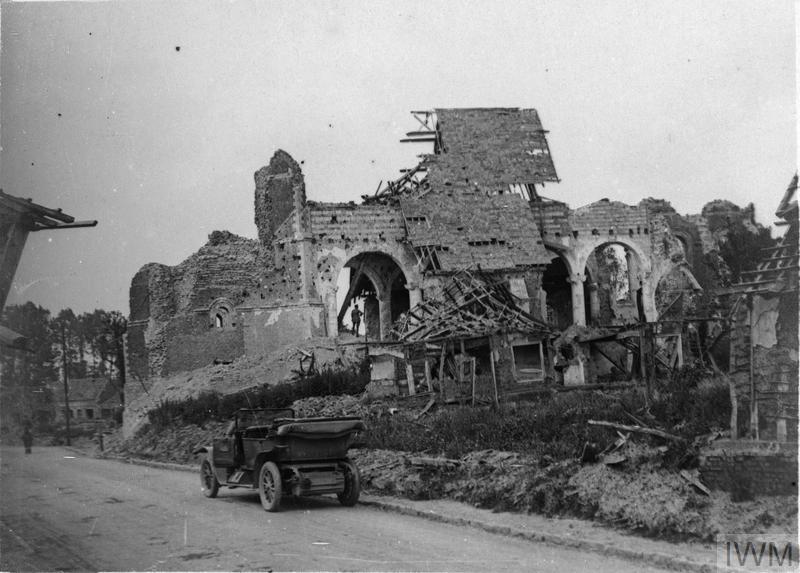Saw Enormous explosion in far distance, apparently in enemy terrain, either a big dump or a mine – it went on piling and building itself into the sky for quite a minute, eventually assuming the appearance of a volcanic eruption, attaining a height of, I should say, 2000 ft. Our infantry have pushed on again and this afternoon we moved our guns forward.
My Irish mate O’Shaughnessy, has a peculiar dread of gas and takes all sorts of precautions against it – says he has “no love for the Grave!” He sees danger in all directions without being cowardly.
6.30.p.m. A hard afternoon, but an exhilarating and exciting one. I will try to give you an idea of how field artillery is moved forward in an advance. The six gun-limbers (2-wheeled vehicles to which the guns are hooked) go up first to the battery; the twelve wagons being kept well in the rear meanwhile, at stated intervals. At a suitable moment the gun limbers pull the guns out of their pits or emplacements and take them forward to the new positions selected, leave them there and make themselves scarce without more ado. The few rounds carried by the limbers would have been first thrown out, keeping at intervals of (say) 200 yards and taking a route as much as possible protected from aerial observation. These all unload their shells at their respective guns and lose no time in getting out of it, as their presence there threatens to betray the battery’s position. Back to the wagon lines with empty wagons, to replenish them with ammunition brought up by the D.A.C. from the main dumps in rear, which in their turn have been fed by motor lorries or railways. That is a rough sketch of the operation, but it is the jolting, the banging, the capsizing, and dropping off of loads, the heaving in and out of the heavy shells, the performances of the animals and the moments of peril, that make the business the exciting helter-skelter it is. We returned by a route right through Bapaume, famous in its hour of destruction if never before. Not a building intact. The church in this village (Grevillers) bears date 1564 – it has been left to modern civilisation to smash it to bits.
Got a new tin hat from salvage dump, having driven over my own today and dented it sadly. Wheel driver also dropped his and flattened it right out. Those donks of mine! Today they got so hungry that they ate a quantity of stinging nettles thick with dust. The Poet is a big coward, but the Hunter doesn’t care a rap for anything.

[Image: Ruins of the church at Grevillers, 3 July 1917. IWM (Q 78484)]

[Image: A ruined street looking down from the church at Grevillers, 3 July 1917. IWM (Q 61212)]

D.A.C. – Divisional Ammunition Column.
Such a descriptive and informative posting. (Not surprisingly.)
And this concise and most profound statement:
“The church in this village bears date 1564 – it has been left to modern civilisation to smash it to bits.”
LikeLike
And then, from such solemnity to the tedium of his tin hat and his companions, the mules.
LikeLike